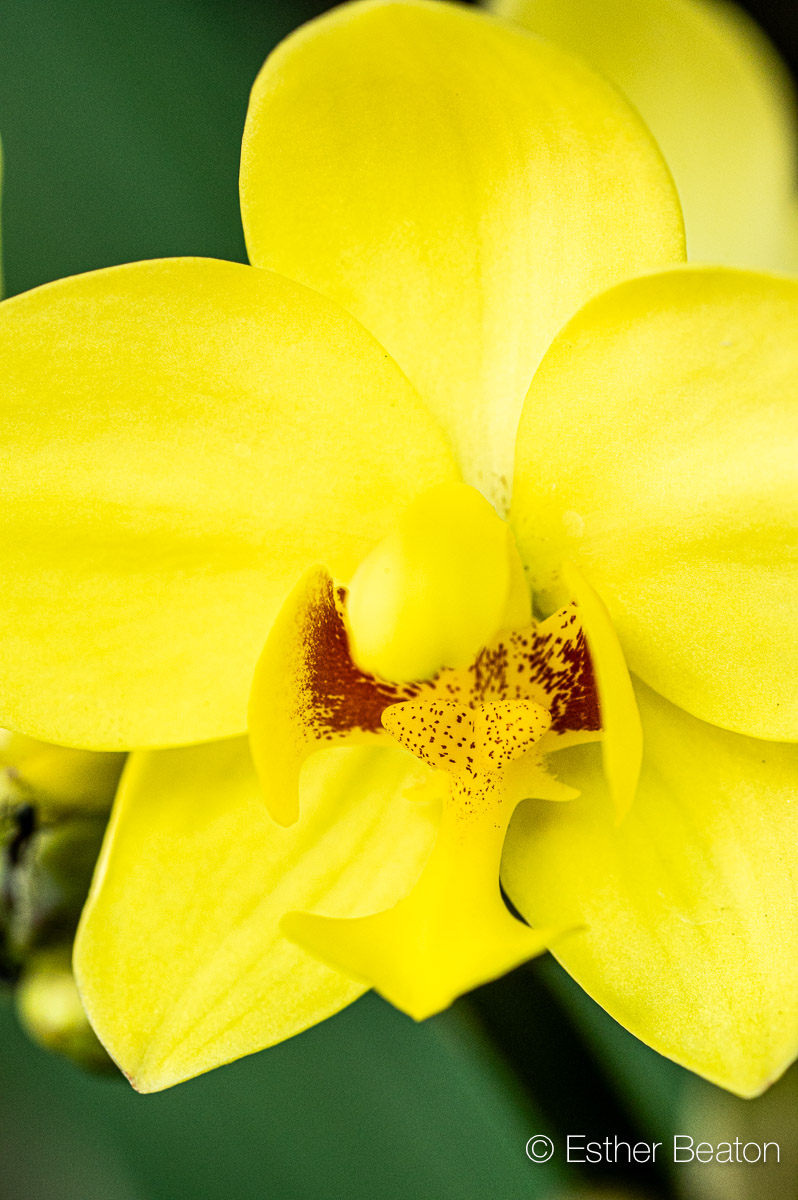The For Sale sign was advertising “Native Ground Orchids”. What — there are native ground orchids in a nursery? I thought Australia’s ground orchids could not be propagated? Something about needing mycorrhizal associations…? Mystified, I hit the brakes and careened into the nursery’s driveway to check out this amazing feat.

Oh, they meant that kind of orchid — the large, so called “epiphytic” orchids in genera like Dendrobium or Phaius. The kind that I see mad orchid lovers hoarding in their greenhouses and competing in orchid shows. But since I was trying to plant natives throughout my new garden, I thought I would try it. The nursery owner assured me this is a hardy variety and easily self-propagates. So I bought this hybrid of Spathoglottis called “Lemon Kiss” and a few months after planting it, I had a delightful surprise. But not the one I was expecting.

Nearby I had noticed a strange leaf popping out of the mulch. I almost weeded it out but thought I’d let it go a bit longer to see how it would manifest itself. After several weeks, the leaves had multiplied and I was getting suspicious. When a flower bud emerged on the tip of a hooked stem, I took a mirror to see up into the downward pointing bud. Oh Lordy. It was an orchid. Not an imposter but a native Nodding Orchid. Another epiphyte type of ground orchid. Totally self-seeded! And surviving! In MY yard!
Not to be outdone, my purchased Lemon Kiss then decided to put on a show of its own. Well, I guess I’m a convert to Australia’s native “ground” orchids now.
Nevertheless, I had always been in pursuit of what I think of as legitimate ground, or terrestrial, orchids. These are almost always insignificant to the naked eye, but once you get to know a few, they are some of the greatest marvels of botany. But it often takes an expert orchid hunter to spot them; they could be right at your feet and you don’t see them.
Knowing my interest I got a message from Joan Heavey, the expert who wrote the orchid chapter in the book “Noosa’s Native Plants”, to say she had spotted a couple while strolling in Tewantin. No hesitation on my part. I was there at 7am the next morning. Joan introduced me to one I had always wanted to see here on the Sunshine Coast, an elbow orchid called Arthrochilus. And a few metres away she pointed out an old friend of mine – a cluster of bonnet orchids, Cryptotylis erecta.





I happily settled down to a good photography session. In the past I would have had loads of lighting gear, tripods and fancy accessories. But I kept it simple this time, to see how my new mirrorless camera would perform, especially in the shade and with the back-saving advantage of a fold-out screen. Not bad, I thought, but I did feel the need to use a silver card to reflect a bit of sunlight onto the low elbow orchids.

It’s taken a few years for me to feel settled in Queensland, especially since the native vegetation and habitats are new to me. But now that I’ve made friends with some orchids – and even more so, have become an unexpected parent to the strays in my backyard – I feel that I have finally arrived.
sexual deception


